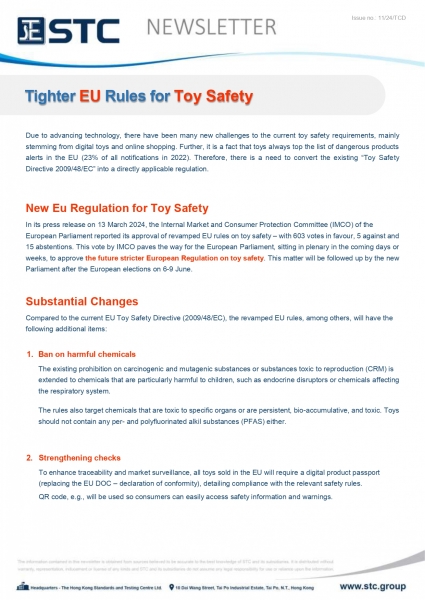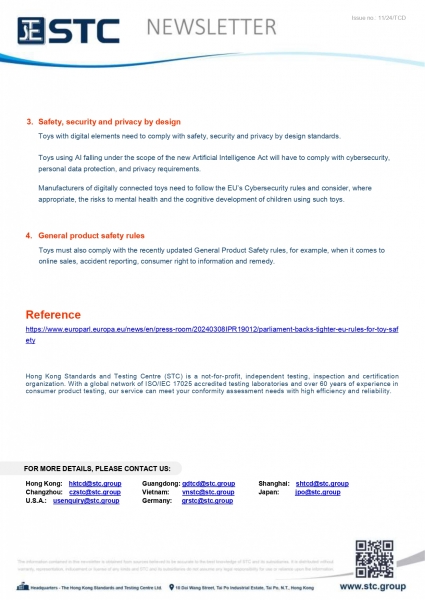
Tighter EU Rules for Toy Safety
Due to advancing technology, there have been many new challenges to the current toy safety requirements, mainly stemming from digital toys and online shopping. Further, it is a fact that toys always top the list of dangerous products alerts in the EU (23% of all notifications in 2022). Therefore, there is a need to convert the existing “Toy Safety Directive 2009/48/EC” into a directly applicable regulation.
New Eu Regulation for Toy Safety
In its press release on 13 March 2024, the Internal Market and Consumer Protection Committee (IMCO) of the European Parliament reported its approval of revamped EU rules on toy safety – with 603 votes in favour, 5 against and 15 abstentions. This vote by IMCO paves the way for the European Parliament, sitting in plenary in the coming days or weeks, to approve the future stricter European Regulation on toy safety. This matter will be followed up by the new Parliament after the European elections on 6-9 June.
Substantial Changes
Compared to the current EU Toy Safety Directive (2009/48/EC), the revamped EU rules, among others, will have the following additional items:
1. Ban on harmful chemicals
The existing prohibition on carcinogenic and mutagenic substances or substances toxic to reproduction (CRM) is extended to chemicals that are particularly harmful to children, such as endocrine disruptors or chemicals affecting the respiratory system.
The rules also target chemicals that are toxic to specific organs or are persistent, bio-accumulative, and toxic. Toys should not contain any per- and polyfluorinated alkil substances (PFAS) either.
2. Strengthening checks
To enhance traceability and market surveillance, all toys sold in the EU will require a digital product passport (replacing the EU DOC – declaration of conformity), detailing compliance with the relevant safety rules.
QR code, e.g., will be used so consumers can easily access safety information and warnings.
3. Safety, security and privacy by design
Toys with digital elements need to comply with safety, security and privacy by design standards.
Toys using AI falling under the scope of the new Artificial Intelligence Act will have to comply with cybersecurity, personal data protection, and privacy requirements.
Manufacturers of digitally connected toys need to follow the EU’s Cybersecurity rules and consider, where appropriate, the risks to mental health and the cognitive development of children using such toys.
4. General product safety rules
Toys must also comply with the recently updated General Product Safety rules, for example, when it comes to online sales, accident reporting, consumer right to information and remedy.
Reference:











